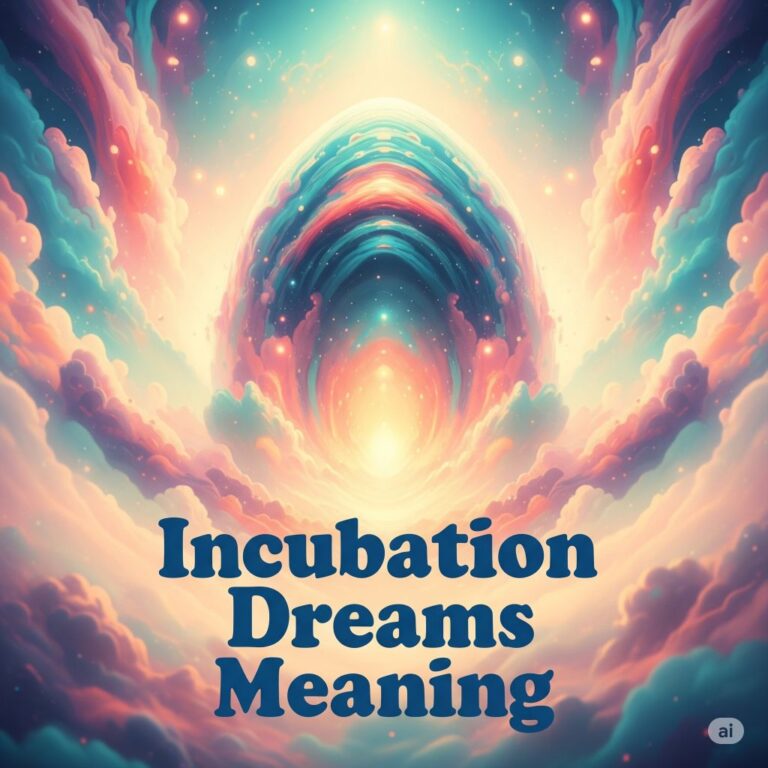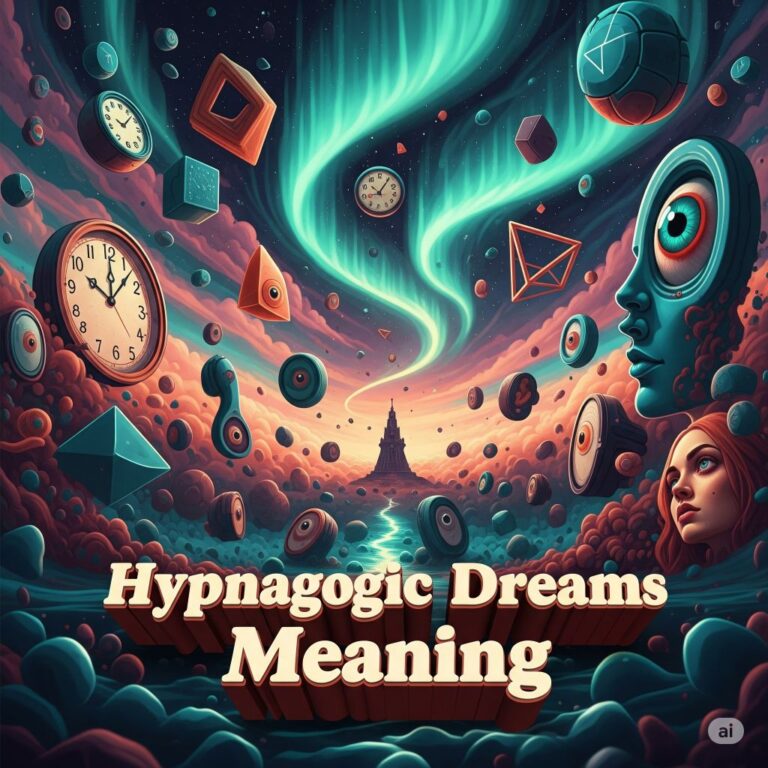
False awakening dreams represent a fascinating phenomenon where dreamers believe they have awakened from sleep, only to discover they are still dreaming. These experiences can be remarkably vivid and convincing, sometimes occurring in loops or sequences that create multiple layers of apparent awakening. While common among general dream experiences, false awakenings hold particular significance in dream research, psychology, and consciousness studies due to their unique characteristics and implications for our understanding of consciousness and reality perception.
What Are False Awakening Dreams?
False awakening dreams are characterized by the convincing illusion of waking up from sleep, while actually remaining in a dream state. These experiences typically feature:
Key Characteristics:
- Realistic Details: Often include mundane morning activities and familiar environments
- Convincing Sensations: Physical and sensory experiences that feel remarkably real
- Environmental Accuracy: Detailed representations of the dreamer’s actual sleeping environment
- Sequential Possibility: Can occur in loops or nested sequences
- Variable Awareness: May include different levels of lucidity or dream awareness
Types of False Awakenings
Research and dream studies generally recognize two main types:
Table 1: Types of False Awakenings
| Type | Characteristics | Common Elements | Emotional Tone |
|---|---|---|---|
| Type 1 | Mundane, realistic | Regular morning routines, familiar environment | Generally neutral or positive |
| Type 2 | Atmospheric, uncanny | Subtle distortions, sense of foreboding | Often anxious or unsettling |
Psychological Perspectives
1. Cognitive Processing
False awakenings may represent the brain’s processing of:
- Sleep-Wake Transitions: Mental rehearsal of waking processes
- Reality Testing: Practice in distinguishing between states of consciousness
- Memory Consolidation: Integration of daily experiences and routines
2. Psychological Significance
These dreams often relate to:
- Anxiety and Stress: Reflecting concerns about oversleeping or responsibilities
- Control Issues: Processing feelings about control and predictability
- Transition Challenges: Difficulty with life transitions or changes
3. Defense Mechanisms
False awakenings might serve as psychological protection:
- Gradual Awakening: Buffering the transition from dream to waking consciousness
- Emotional Processing: Creating space to process difficult emotions or experiences
- Avoidance: Protecting from anxiety-producing dream content
Neurological Understanding
1. Brain State Transitions
False awakenings often occur during:
- REM-NREM Transitions: Shifts between sleep stages
- Sleep-Wake Boundaries: Periods of unstable sleep state
- Micro-Awakenings: Brief, unremembered actual awakenings
2. Neural Activity Patterns
Research suggests involvement of:
- Default Mode Network: Self-referential processing
- Reality Monitoring Systems: Brain regions involved in distinguishing real from imagined experiences
- Memory Centers: Areas processing episodic and procedural memories
Common Themes and Patterns
1. Environmental Elements
Typical settings include:
- Bedroom/Home: Most common setting, usually accurate to reality
- Morning Routines: Common activities like:
- Getting dressed
- Bathroom visits
- Checking the time
- Starting daily tasks
2. Recurring Features
Table 2: Common Elements in False Awakening Dreams
| Element | Description | Frequency | Significance |
|---|---|---|---|
| Time Checking | Looking at clocks or devices | Very Common | Reality testing, anxiety about time |
| Mirror Viewing | Examining reflection | Common | Self-perception, identity concerns |
| Device Use | Interacting with phones, alarms | Increasing | Modern anxiety, connectivity concerns |
| Routine Tasks | Daily morning activities | Very Common | Processing daily patterns |
| Environmental Checks | Examining room details | Common | Reality verification attempts |
3. Warning Signs
Typical indicators of false awakening:
- Time Inconsistencies: Clocks showing impossible or changing times
- Physical Anomalies: Unusual bodily sensations or capabilities
- Environmental Distortions: Subtle changes in familiar spaces
- Technical Malfunctions: Devices working unusually or not at all
- Repetitive Elements: Actions or events repeating unnecessarily
Practical Implications
1. Reality Testing Techniques
Methods for identifying false awakenings:
- Physical Checks:
- Reading text multiple times
- Looking at digital displays
- Attempting simple calculations
- Testing physical laws (jumping, floating)
- Mental Checks:
- Questioning how you got there
- Reviewing recent memory sequence
- Checking emotional state
- Assessing environment logic
2. Coping Strategies
Ways to handle false awakening experiences:
- Mindful Awareness:
- Regular reality testing habits
- Present-moment attention
- Environmental awareness practice
- Emotional Management:
- Staying calm during episodes
- Accepting the experience
- Using as learning opportunities
3. Integration Methods
Approaches for processing these experiences:
- Documentation:
- Keep a dream journal
- Note patterns and triggers
- Track frequency and conditions
- Analysis:
- Identify common themes
- Connect to waking life
- Explore psychological significance
Cultural and Historical Perspectives
1. Traditional Views
Various cultural interpretations include:
- Spiritual Messages: Signs or communications from other realms
- Prophetic Significance: Warnings or predictions
- Soul Travel: Astral projection or soul wandering
2. Modern Interpretations
Contemporary perspectives include:
- Consciousness Studies: Insights into awareness and perception
- Psychology: Understanding sleep-wake transitions
- Neuroscience: Brain state investigations
Research Applications
1. Sleep Studies
False awakenings provide insights into:
- Sleep Architecture: Understanding sleep stage transitions
- Consciousness States: Studying awareness during sleep
- Dream Formation: Understanding dream construction
2. Clinical Applications
Relevance to:
- Sleep Disorders: Understanding sleep disruption
- Anxiety Treatment: Processing sleep-related anxiety
- PTSD Therapy: Addressing nightmare disorders
Therapeutic Approaches
1. Clinical Interventions
Methods for addressing problematic false awakenings:
Table 3: Therapeutic Approaches
| Approach | Method | Benefits | Considerations |
|---|---|---|---|
| CBT | Cognitive restructuring | Reduces anxiety | Requires consistent practice |
| Mindfulness | Present-moment awareness | Improves recognition | Takes time to develop |
| Dream Work | Processing dream content | Deeper understanding | May need professional guidance |
| Sleep Hygiene | Improving sleep habits | Better sleep quality | Lifestyle adjustments needed |
2. Self-Help Strategies
Personal management techniques:
- Sleep Optimization:
- Regular sleep schedule
- Healthy sleep environment
- Stress management
- Exercise and diet
- Mental Preparation:
- Relaxation techniques
- Positive affirmations
- Anxiety management
- Reality checking habits
Conclusion
False awakening dreams represent a complex and fascinating aspect of human consciousness and sleep experience. These dreams challenge our understanding of reality perception and consciousness states while offering valuable insights into sleep processes and psychological functioning.
Understanding false awakenings can help individuals:
- Better manage these experiences
- Reduce associated anxiety
- Use them as tools for psychological insight
- Improve overall sleep quality
- Develop greater consciousness awareness
As research continues, false awakening dreams remain an important area of study in sleep science, psychology, and consciousness research, offering valuable insights into the nature of human awareness and the relationship between dreaming and waking consciousness.






